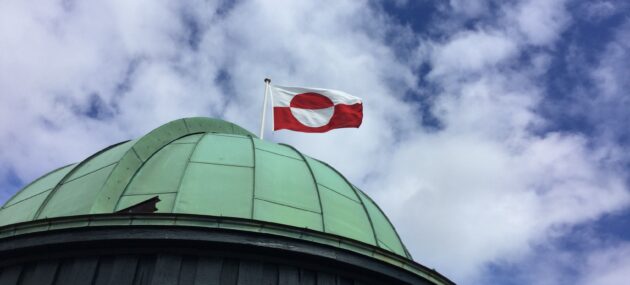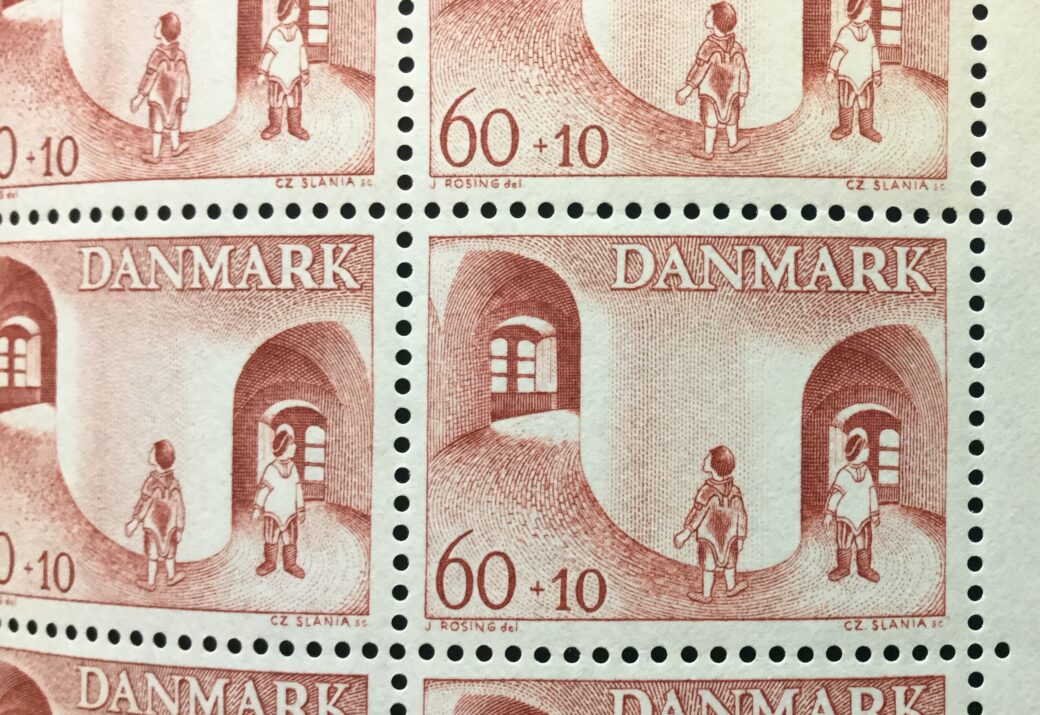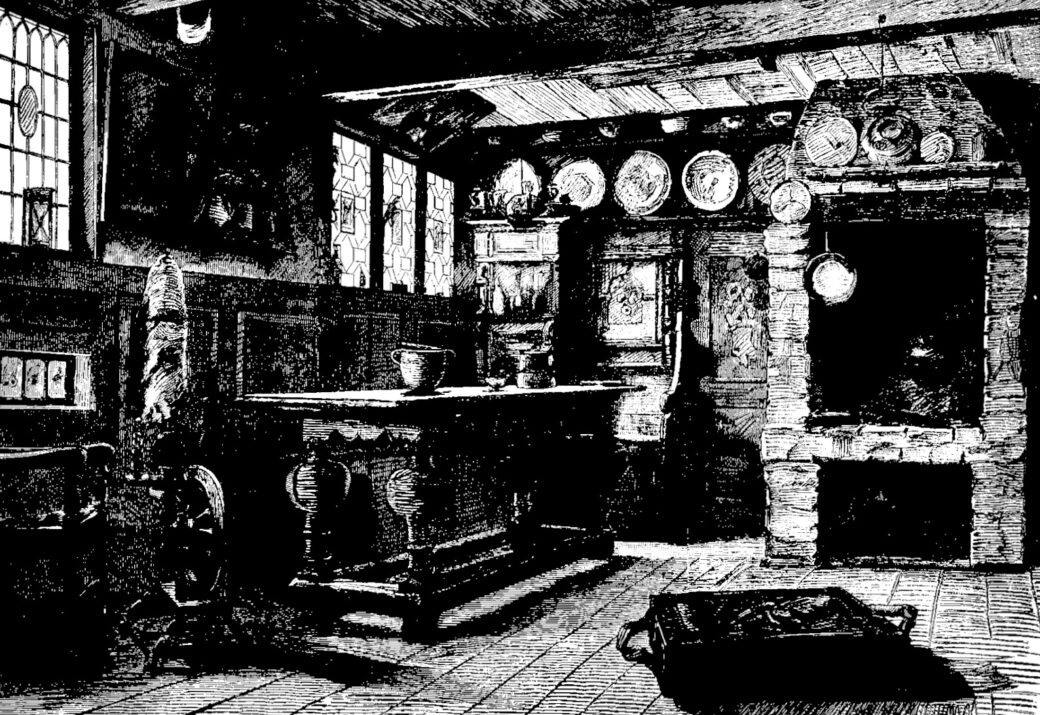This website uses cookies so that we can provide you with the best user experience possible. Cookie information is stored in your browser and performs functions such as recognising you when you return to our website and helping our team to understand which sections of the website you find most interesting and useful.

The Universe in Greenlandic
People who live in glass houses shouldn’t throw stones. On the other hand, one could accidently throw not just grit, but stardust and lunar rocks in the great cosmic machinery if one tries to make it comprehensible to a wider circle of people.
This is roughly how one can summarize at least part of the astronomer and mathematician Georg Frederik Ursin’s (1797-1849) popular science business, which, among other things, includes popular lectures on astronomy. He began to lecture in the 1820s while he was an observer at the Round Tower and he continued to spread the knowledge of space after he had served as acting director of the Observatory on the top of the tower from 1829 to 1832 and went on to other institutions.
Icelandic and Greenlandic
Ursin, who has also written a Historical Account of the University Observatory at the Round Tower (Historisk Beretning om Universitæts-Observatoriet paa Rundetaarn), reached far and wide with his dissemination of astronomy in the Danish kingdom, which was greater in scale then than it is now. Thus, his book Popular Lecture on Astronomy (Populært Foredrag over Astronomi) from 1838 was translated into Icelandic, and the same year he published a little book with the mighty title Outline of the World Building (Kort Begreb af Verdensbygningen) in the “Reading for the Common People” (”Læsning for Almuen”) series, which was printed in a bilingual Danish-Greenlandic edition the following year.“The identification continues when Ursin a little later has to prove that the Earth is round, even though it does not look like it”
It is called View of the World Building (Udsigt over Verdensbygningen), or Erkarsàutigirseksæt sillársoarmik in Greenlandic, and has the Danish text on the left side of the book and the Greenlandic translation, which is made by the priest Peter Kragh (1794-1883), on the right side. Kragh had spent 10 years as a missionary in Egedesminde (Aasiaat) and had given his inaugural sermon in Greenlandic, whereafter he, among other things, translated parts of the Old Testament and a book called Information for Midwives in Greenland (Underretning for Jordemødre i Grønland).
How Are We Doing Today?
But language is not the only Greenlandic aspect of View of the World Building. There is a clear pedagogical ambition behind the written words, which has made the author use identification and examples from a Greenlandic frame of reference to make the nature and laws of the Universe understandable.
“We all know that the Earth extends far beyond the land in which we dwell; have we not all seen strangers come to us from faraway countries?” the opening line of the book thus says. The identification continues when Ursin a little later has to prove that the Earth is round, even though it does not look like it, and he uses the drifting ice masses on the sea as an explanation for this fact. And when Ursin, who was a native Copenhagener, has to account for the Earth’s rotation, he jauntily states in the manner of a doctor doing the ward rounds that, “our houses, tents, the mountains that we see before our eyes, in other words, everything around us, rotates […] with us”.
“After Mars four minor planets follow, which are all so far from the Sun that one would need to row for almost 13000 years in order to reach it”
In a similar manner, the system of measurement that is used throughout the book is based on how far a man can row in one day. Ursin thus writes that “A man who would be able to row around the Earth in 450 days […] would in 123 days or 4 months be able to row around the Moon”. If one can get a fairly good knowledge of the size of the individual celestial bodies in this way, the equation becomes somewhat staggering, though, in terms of the distance between them. “After Mars four minor planets follow,” Ursin writes, “which are all so far from the Sun that one would need to row for almost 13000 years in order to reach it”.
The Proper Understanding
Although Ursin almost jumps into the kayak and sits next to the Greenlandic sealer in his illustrative examples, there are limits to how far he wants to join. The inclusive “we” is suddenly interrupted by a schoolmaster’s tone that makes an explicit distinction between the traditional Greenlandic explanatory models with a mythical leaning and Ursin’s understanding of the world as an orderly cosmos having the Creator as the ordering force behind.
“Through this short account of the Sun, Moon and Earth you will already realise that you have, in many cases, had an erroneous knowledge about these until now”, he writes. “After all, the beliefs of your unchristian forefathers were based on superstition, and I am sure you have heard, that they believed that the Sun was a Greenlandic woman, which the Moon, a Greenlandic man, chased after without ever catching. All of this is, as so many other things, erroneous. What I have told you, on the other hand, is what is true.”
Life Out There
And this is where the glass house comes in. Although one can have sympathy for Ursin’s information project in the North Atlantic region, it is more difficult to concur with him when he finally states that rational beings also exist elsewhere in the Universe. As he writes in a peculiar mixture of rationalism, religion and science fiction:
“Just as the Earth is inhabited by creatures everywhere, so too must we assume that other planets are, some of which are larger than our Earth, yes we even must assume that the Sun itself is inhabited, even though we believe that the creatures who reside there are of a completely different nature than those who find housing on our Earth. But all of the stars are suns like our Sun; and these are most likely, by the wisdom and goodness of the Creator, home for sensible beings and animals; their planets are inhabited like our Sun’s planets.”


